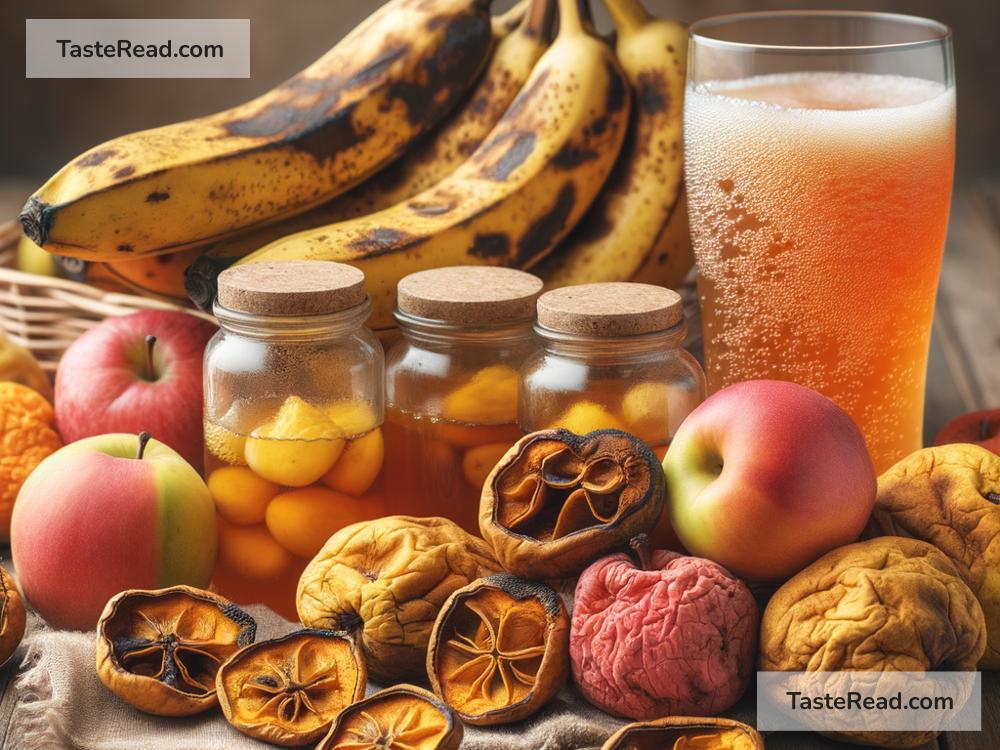The Connection Between Fruit Over-Ripeness and Fermentation Flavors
Have you ever bitten into an overripe banana and noticed how it tastes different from a perfectly ripe one? Or maybe you’ve sniffed a very soft peach and caught a whiff of something that smells almost like alcohol. This change in flavor may not seem significant at first, but it’s part of a natural process known as fermentation. Over-ripeness and fermentation are closely connected, and understanding this connection can help us appreciate the science behind how fruits change as they age.
What Happens When Fruit Becomes Overripe?
When a fruit is ripe, it’s at its peak for eating—it’s sweet, flavorful, and easy to bite into. However, fruits don’t stay in their perfect state for long. Over time, enzymes inside the fruit begin to break down its natural components, like starches and sugars. At the same time, microorganisms such as yeast and bacteria found on the fruit’s skin or in the surrounding environment start to multiply.
As fruits become overripe, their texture often gets softer, their aroma stronger, and their sugar levels higher. This happens because the enzymes and microorganisms are essentially digesting the fruit’s tissues. While this might sound unappetizing, it’s actually part of a fascinating transformation that can lead to new flavors—sometimes good, sometimes bad.
Enter Fermentation
Fermentation is a process where microorganisms like yeast and bacteria convert sugars into other substances, such as alcohol or acids. This process is often associated with foods like bread, yogurt, cheese, and, of course, beverages like wine and beer. But fermentation doesn’t just happen when humans intentionally prepare food—it can also occur naturally, especially in overripe fruit.
When a fruit surpasses its ripeness and starts to break down, its high sugar content and soft texture make it an ideal environment for fermentation. Yeast, which is often present on the fruit’s skin from the environment, starts feeding on the sugars. As it does so, it turns the sugars into small amounts of alcohol and carbon dioxide. This is why overripe fruit can sometimes have a tangy, slightly fizzy, or alcohol-like taste.
In some cases, overripe fruit develops a smell reminiscent of fermented beverages. For example, a very ripe banana may start to emit a scent similar to rum, or a bruised apple might give off a cider-like aroma. These fermentation flavors are why overripe fruit is sometimes used as an ingredient in recipes for homemade wines, jams, or even baked goods.
The Science Behind Fermentation Flavors
The flavors produced during fermentation aren’t random—they’re the result of specific chemical reactions. When yeast consumes the fruit’s sugar, it produces ethanol, a type of alcohol, along with other compounds like esters and aldehydes. These chemical byproducts contribute to the fruity, tangy, or even tropical aromas we associate with fermented products.
Some fruits are naturally more prone to showing fermentation flavors as they overripen. For instance, grapes and apples contain high levels of sugar, making them excellent candidates for fermentation. This is one reason why they’re the primary ingredients in wine and cider production. On the other hand, fruits like citrus, which are more acidic and contain less sugar, may not develop fermentation flavors as noticeably.
The temperature at which the fruit overstays its ripeness also plays a role. Warm, humid conditions can speed up the fermentation process, while cooler temperatures slow it down. This is why overripe fruit stored at room temperature will often taste and smell more fermented than fruit kept in the fridge.
When Are Fermentation Flavors Desirable?
Not all fermentation flavors are bad; in fact, they’re highly desirable in many cases! Think of wine and craft cider—these beverages rely on the fermentation of fruit sugars to achieve their unique tastes. Similarly, overripe bananas are perfect for making banana bread because their slightly fermented sweetness adds depth to the flavor.
At the same time, fermentation flavors can be undesirable if the process goes too far. For example, if overripe fruit smells overly sour, unpleasant, or rotten, it’s likely been taken over by harmful bacteria rather than beneficial yeast. This can make the fruit unsafe to eat. Knowing the difference between a pleasantly fermented flavor and a spoiled one is vital for deciding whether overripe fruit can still be useful.
How Can We Use Overripe Fruits?
Instead of throwing away overripe fruits, many people find creative ways to use them—and fermentation flavors can actually improve certain recipes. Here are a few ideas:
- Smoothies: Overripe fruits like bananas and mangoes can add extra sweetness and flavor to smoothies.
- Baking: Use fruits like bananas, apples, or pears to make breads, muffins, or pies. Their soft texture and intensified sugars are perfect for baking.
- Homemade Cider or Wine: Experiment with fermenting overripe apples, grapes, or berries to make your own beverages.
- Jams and Preserves: Overripe fruit’s strong flavors work wonderfully in homemade jams.
Conclusion
The connection between fruit over-ripeness and fermentation flavors is more than just an interesting quirk—it’s a natural and fascinating process. As fruits age, their sugars provide fuel for microorganisms like yeast, which transform the fruit in ways that can be surprising and delicious. While fermentation can sometimes lead to spoilage, it also helps create some of the world’s tastiest foods and beverages.
So, the next time you notice fruit getting a little too ripe, think twice before tossing it out. That sweetness and odd tang you taste might just be the start of something amazing!


